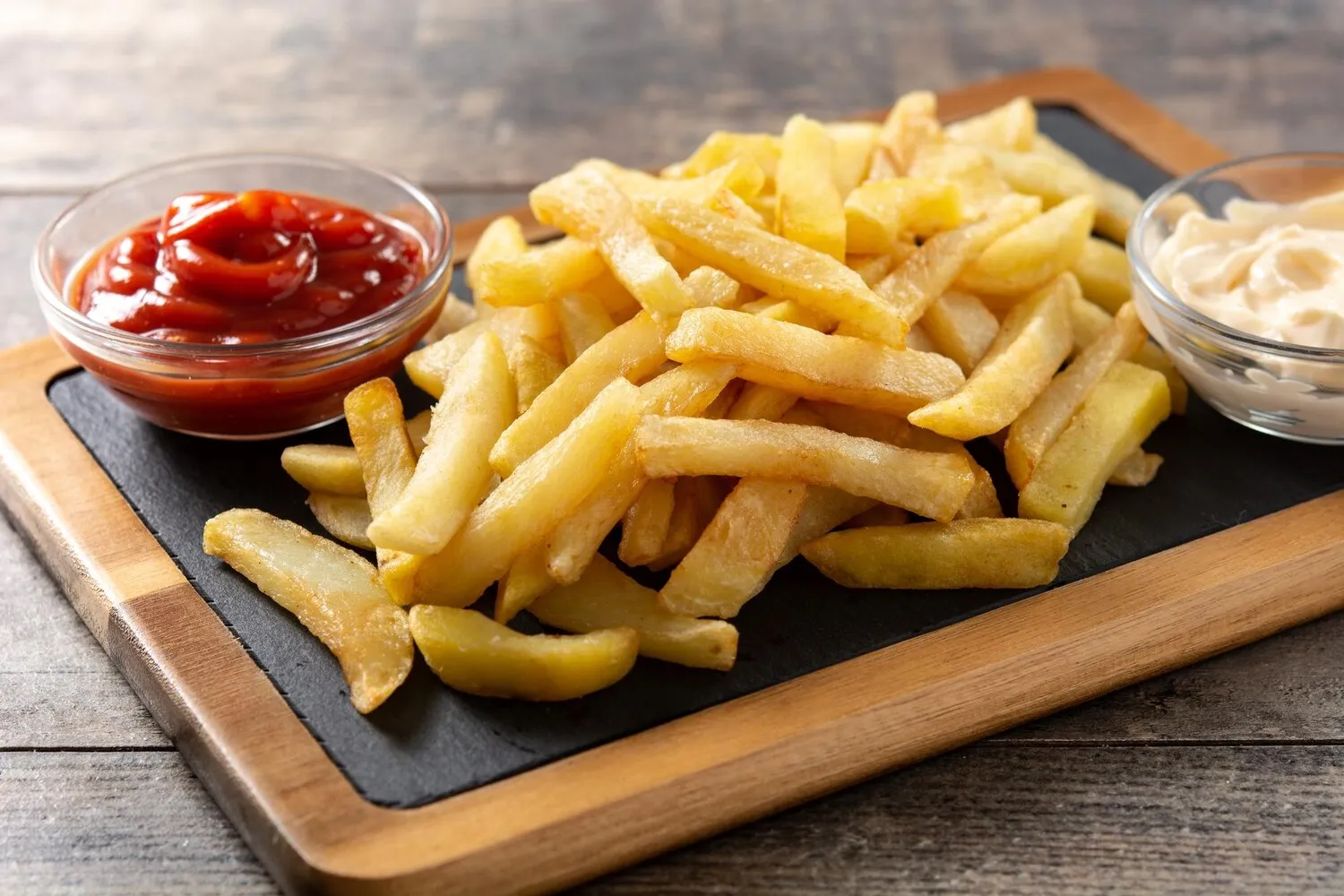
Mandioca Frita
Fried cassava, a popular side dish in Brazil.
Nutrition Facts
* The % Daily Value (DV) tells you how much a nutrient in a serving of food contributes to a daily diet. 2,000 calories a day is used for general nutrition advice.
Restaurante Carne De Sol
Cassava, or mandioca, has been a staple food in South America, particularly Brazil, for centuries, predating European colonization. Indigenous populations cultivated and consumed it in various forms. Frying is a cooking technique that likely gained prominence after European contact, integrating readily available oil into traditional cassava consumption. Mandioca frita represents a fusion of indigenous ingredients and culinary methods influenced by later cultural exchanges.
Mandioca Frita is deeply ingrained in Brazilian cuisine and social gatherings, often served as a comforting and accessible side dish. Its ubiquity reflects the importance of cassava in Brazilian food culture.
Street Food Staple
Mandioca Frita is a common street food, easily found at kiosks and food stalls throughout Brazil, offering a quick and tasty snack.
Bar Snack
It's a popular accompaniment to beer and other drinks in bars and restaurants, often served alongside other fried appetizers.
Churrasco Side
Mandioca Frita frequently appears as a side dish at churrascos (Brazilian barbecues), providing a starchy counterpoint to the grilled meats.
Family Meals
It is often a staple in everyday family meals, providing a filling carbohydrate source.
Mandioca Frita offers a simple yet satisfying combination of starchy earthiness and crispy texture. The flavor is mild, allowing it to be a versatile accompaniment to various dishes.
The predominant flavor is the slightly sweet, earthy taste of cassava itself. When fried correctly, the exterior achieves a delightful crispiness that contrasts beautifully with the soft, starchy interior. Salt is typically added to enhance the natural flavors. Some variations might include light seasonings like garlic powder or paprika.
Choosing the Right Cassava
Opt for fresh, firm cassava roots. Look for ones without blemishes or soft spots. The flesh should be white or slightly yellow.
Soaking the Cassava
Soaking the peeled and cut cassava in cold water for about 30 minutes before frying helps to remove excess starch and contributes to a crispier texture.
Double Frying
For extra crispiness, consider double frying. Fry the cassava at a lower temperature first to cook it through, then fry it again at a higher temperature to achieve the desired golden-brown color and crispy exterior.
Oil Temperature
Maintain a consistent oil temperature of around 350-375°F (175-190°C) for optimal frying. Too low, and the cassava will absorb too much oil; too high, and it will burn on the outside before cooking through.
Explore additional Side Dish dishes and restaurants
Explore Side DishDiscover top dining spots and culinary experiences in Serra.
Explore SerraLearn more about the food culture, restaurant scene, and culinary heritage of Brazil.
Explore Brazil
